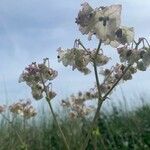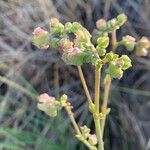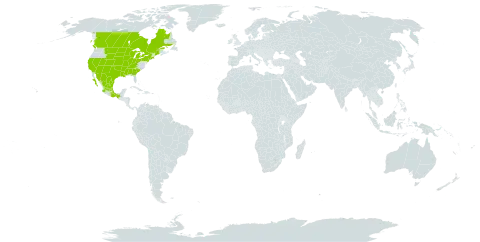Stems 1-many, erect to decumbent, few or highly branched, sparsely to densely leafy in basal 1/2 or throughout, 0.8-15 dm, glabrous to puberulent basally in 2 lines or throughout, hairs often awned, or stems villous and often viscid, or sometimes hirsute, hair types often mixed, spreading pubescent. Leaves ascending to spreading at 10-90°; petiole 0-4 cm; blade green to glaucous blue-gray, linear-lanceolate to ovate-lanceolate, ovate, or deltate, 1-11 × 0.6-2.5 cm in lanceolate leaves, 2-9 × 1-6.5 cm in ovate leaves, thin and fleshy to thick and coriaceous, base cuneate to round, truncate, or cordate, apex acute, obtuse, or round, surfaces glabrous or viscid-puberulent, viscid-villous, or hirsute. Inflorescences axillary or terminal, few branched, ± evenly forked and open, or, when axillary, often consisting only of single involucres (and then flowers commonly cleistogamous); peduncle 1-25 mm, puberulent with curled hairs, hispid, villous, or viscid-villous, crosswalls of hairs pale; involucres pale green or sometimes blushed with purple when young, widely bell-shaped, 4-7 mm in flower, 5-15 mm in fruit, sparsely to densely pubescent with small curled hairs or long spreading hairs, often viscid, 50-80% connate, lobes ovate, triangular-ovate, broadly ovate, or occasionally round. Flowers (1-)3 per involucre; perianth white, pink, or deep red-violet, 0.8-1.5 cm. Fruits brown to dark brown with pale tan, brown, or dark brown ribs, obovoid to narrowly obovate and tapering at both ends, 3.5-5.5 mm, pubescent with tufted spreading hairs 0.1-0.5 mm, with or without minute glandular hairs; ribs round or round-angled, (0.3-)0.7-1.5 times width of sulci, 0.5-1 times as wide as high, with tall shelflike tubercles (eastern part of range), smooth or somewhat rugose or moderately tuberculate (western part of range); sulci with prominent, pale, shelflike tubercles (eastern), minutely rugose or with small low warts (western). 2n = 58.
More
Stems erect or decumbent, 2–10 dm; each internode below the infl with 2 longitudinal strips of incurved hairs mostly less than 0.5 mm; infl glandular-hairy; invol 4 mm, becoming 1.5–3 cm wide at maturity; cal pink, 7–10 mm; anthocarp narrowly obovoid, 5 mm, thinly hairy, coarsely tuberculate on the sides and ridges. Dry prairies, sandhills, and barrens; S.C. to Tenn., Mo. (and reputedly Io.), and Kans., s. to La. and Tex. Summer (Oxybaphus a.; Allionia a.; A. decumbens)


